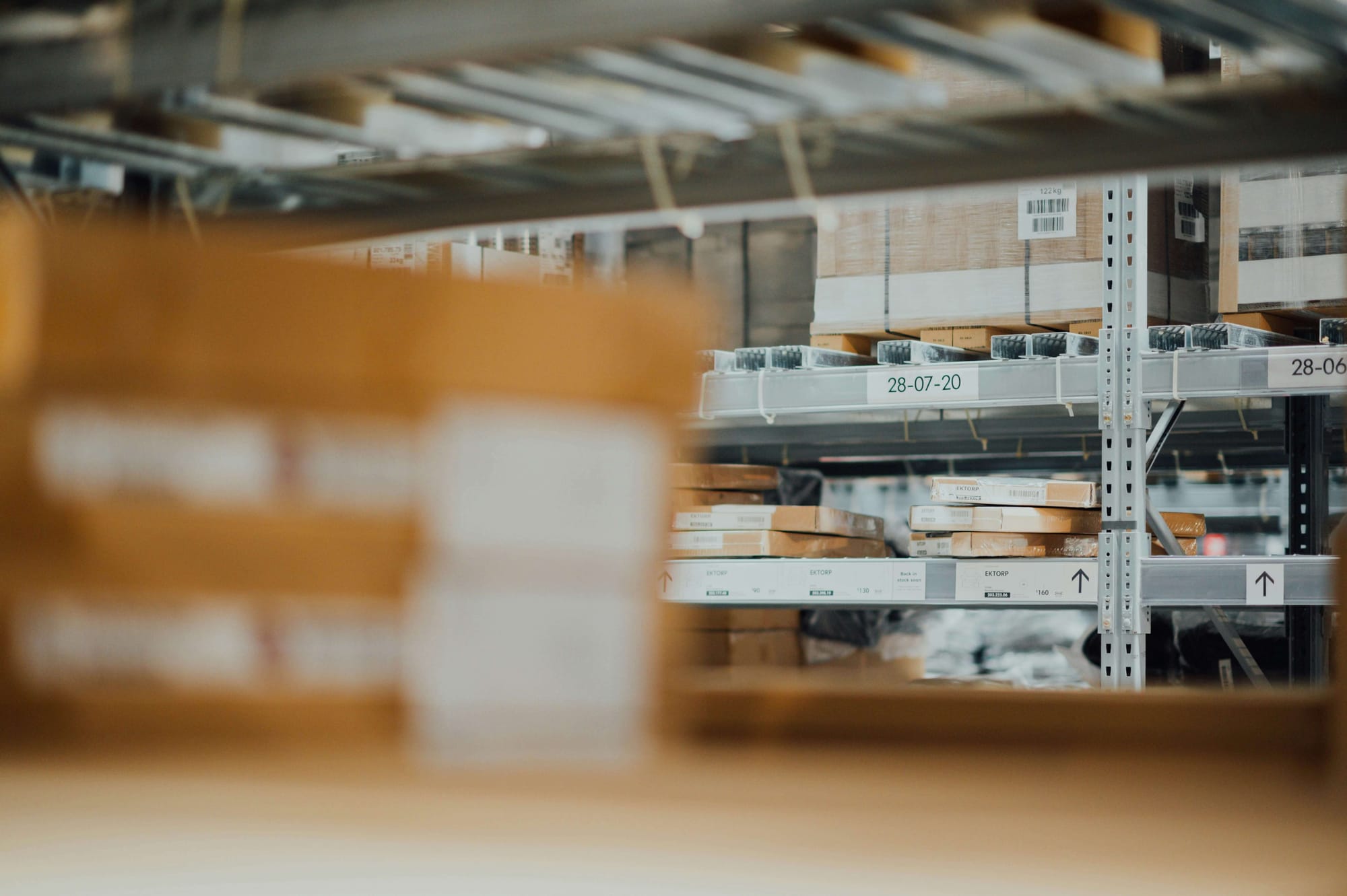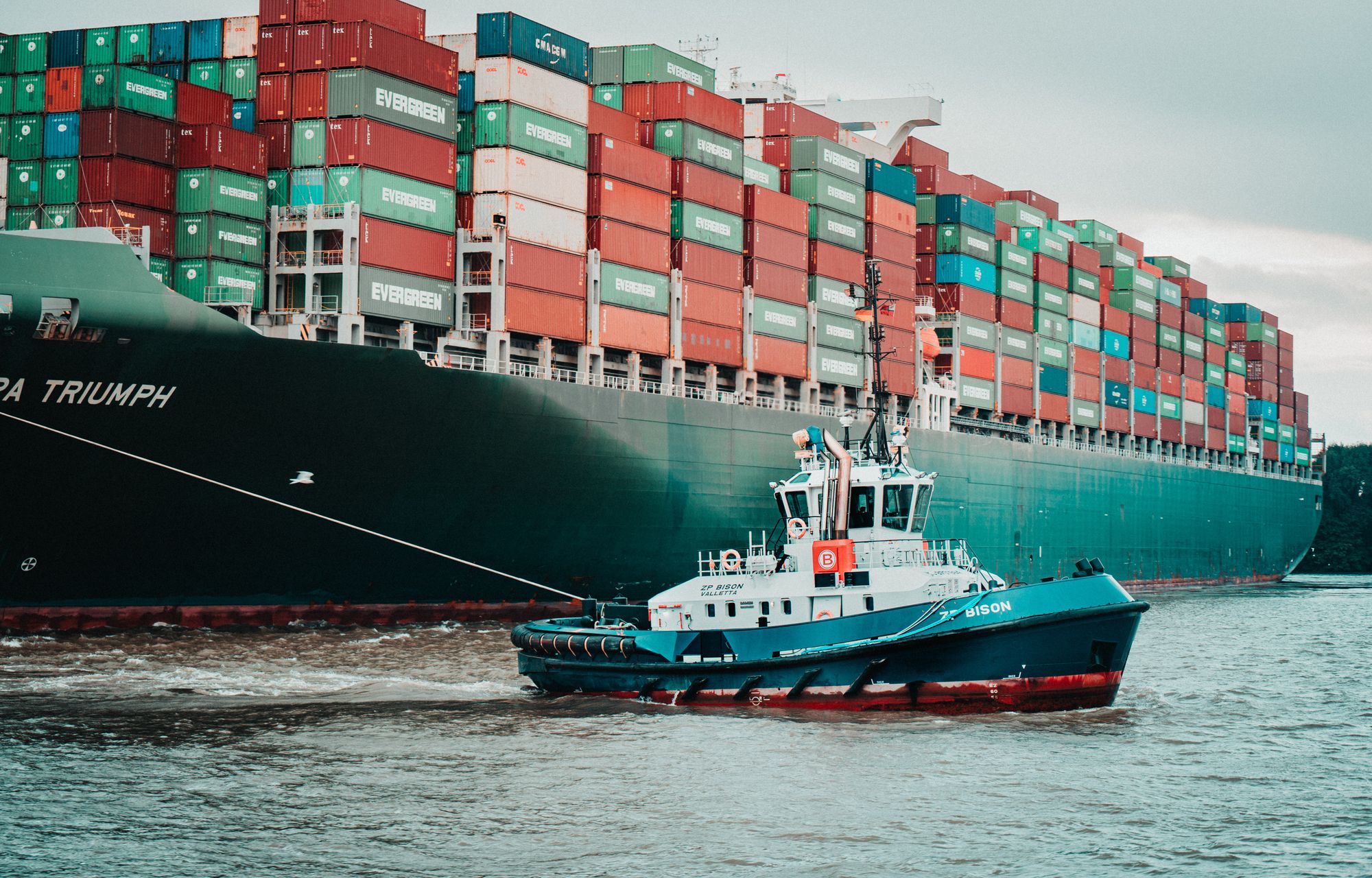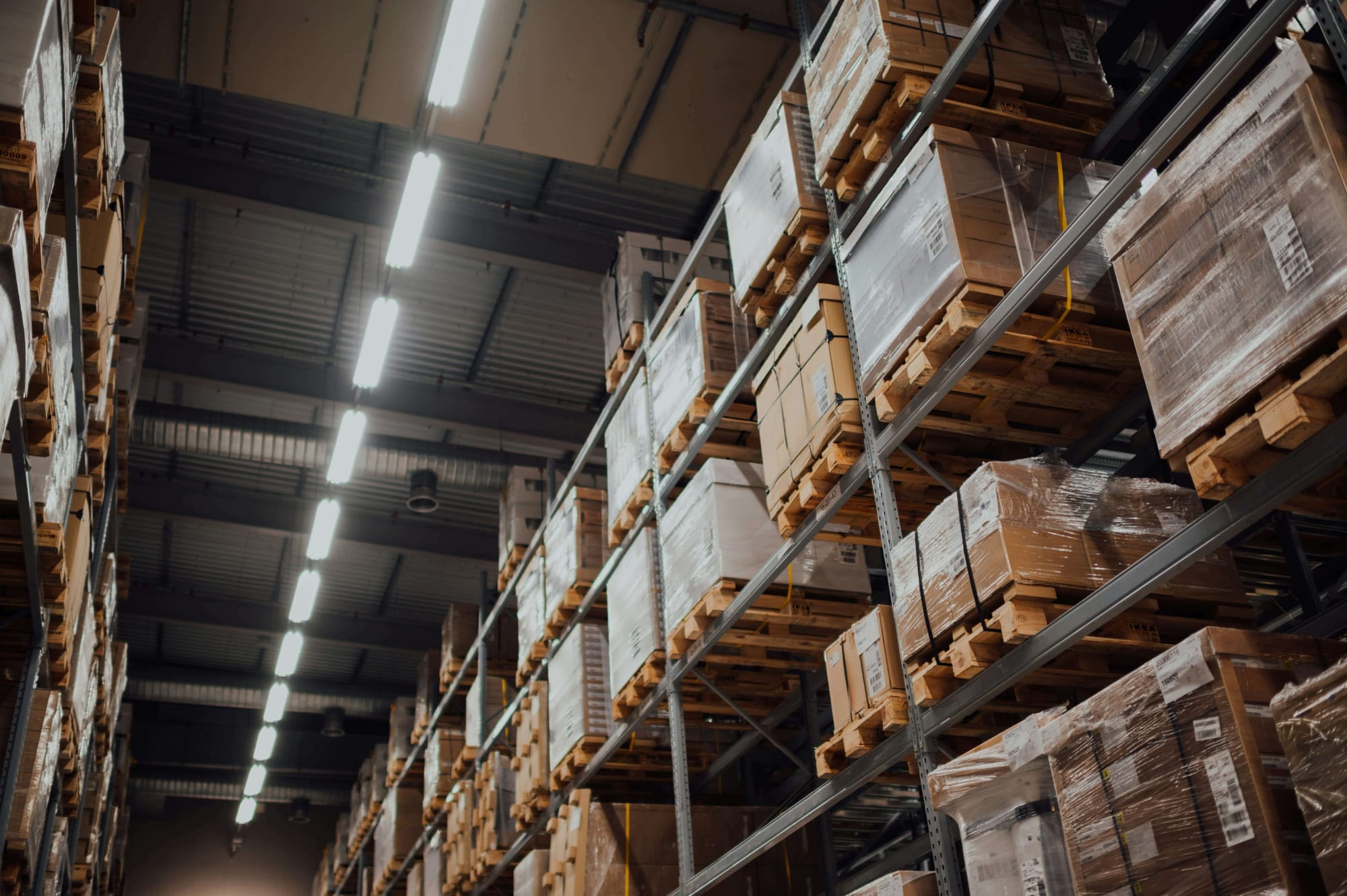Supply chain costs today account for a substantial share of total business spending, often representing 50% to 70% of overall operating expenses. With global markets becoming increasingly unpredictable and customer expectations rising sharply, organizations can no longer afford inefficiencies across procurement, inventory, logistics, and production. Every delay, mismatch, or miscalculation can amplify costs and erode profitability, making cost-optimization a strategic priority rather than a routine operational task.
In this environment, businesses must continuously evaluate how their supply chains function, where leakages occur, and which processes can be streamlined or automated. From overstocked warehouses and poor demand forecasting to fragmented supplier management, the challenges can accumulate quickly—often without being immediately visible. That’s why companies are now shifting toward data-backed, technology-driven strategies that can deliver measurable, long-term cost savings.
Adopting proven supply chain cost-reduction strategies not only helps companies stay competitive but also strengthens business resilience. These strategies help reduce waste, enhance visibility, and ensure that each link in the supply chain—procurement, warehousing, transportation, and production—operates at peak efficiency. Whether an enterprise is scaling or simply trying to stabilize margins, improving supply chain performance is one of the most effective ways to impact bottom-line results.
This is where modern solutions like Deskera ERP play a transformative role. Deskera ERP empowers businesses with real-time inventory visibility, automated procurement workflows, smart demand forecasting, and integrated supply chain analytics—all through a unified platform. Its mobile accessibility and AI-powered insights help teams make faster, more accurate decisions, reducing costs while improving operational agility. By equipping organizations with the right digital tools, Deskera ERP becomes a critical enabler of sustainable supply chain efficiency.
What Are Supply Chain Costs?
Supply chain costs refer to the total expenses a business incurs to move a product or service from concept to the final customer. These costs encompass every activity required to meet demand—forecasting, sourcing raw materials, manufacturing, storing inventory, transporting goods, managing returns, and coordinating administrative processes. In essence, supply chain costs represent the full financial footprint of bringing a market-ready product or service to life.
These expenses include both direct costs, such as raw materials, packaging, and production labor, and indirect costs, such as facilities management, supply chain software, and administrative overhead. Depending on the business, supply chain costs can be categorized in different ways:
- By nature: direct, indirect, fixed, variable, and semi-variable
- By function: procurement, manufacturing, warehousing, logistics, and distribution
This level of classification helps organizations pinpoint cost drivers and identify where improvements can yield meaningful savings or service enhancements.
Because supply chain activities account for a substantial portion of total operating expenses, they have a significant influence on profitability, pricing strategy, and competitiveness. High supply chain costs can erode profit margins, reduce the cash available for growth and innovation, and signal operational inefficiencies such as redundant handling, excess inventory, or frequent expedited shipping. External factors—like fluctuating tariffs, transportation rates, or supplier instability—can also elevate supply chain expenses.
Monitoring and analyzing supply chain costs is therefore a strategic necessity, not just an accounting exercise. Metrics such as supply chain cost per unit, cost as a percentage of sales (CAS), and cash-to-cash (C2C) cycle time provide essential insights into cost efficiency, liquidity, and overall supply chain performance. By understanding these costs in depth, businesses can identify bottlenecks, optimize resource allocation, and build more agile, resilient, and cost-effective supply chains.
Key Components of Supply Chain Costs
Supply chain costs span multiple interconnected activities that enable a business to source, produce, store, and deliver products efficiently. Understanding these components helps organizations identify where money is being spent—and where strategic improvements can significantly reduce overall costs. Below are the major cost categories that form the backbone of any supply chain.
1. Procurement Costs
These include all expenses associated with sourcing and acquiring raw materials, components, or finished goods. Procurement costs cover supplier selection, contract negotiation, purchase orders, inbound freight, quality inspections, and supplier management. Inefficient procurement practices—such as poor negotiation or unreliable suppliers—can drive up material and administrative costs.
2. Production and Manufacturing Costs
This category reflects the costs involved in converting raw materials into finished products. It includes labor, machinery operation, utilities, production planning, equipment maintenance, and quality control. Manufacturing inefficiencies, unplanned downtime, and excess waste directly increase production costs, making process optimization essential.
3. Inventory Holding Costs
Inventory carrying costs consist of storage, handling, insurance, depreciation, shrinkage, and capital tied up in unsold goods. Excess inventory creates high holding costs, while insufficient stock exposes the business to stockouts and lost sales. Balancing demand and supply through accurate forecasting can significantly reduce these expenses.
4. Warehousing Costs
Warehousing expenses involve the operation and management of storage facilities, including rent, labor, equipment, utilities, warehouse technology, order picking, packing, and safety processes. Poor warehouse layout or manual workflows can lead to slower operations, higher labor costs, and more errors.
5. Transportation and Logistics Costs
Transportation costs are often among the biggest contributors to total supply chain spending. They include outbound and inbound freight, shipping rates, fuel, vehicle maintenance, routing, last-mile delivery, and returns (reverse logistics). Inefficient routes, frequent expedited shipping, or poor fleet management can quickly elevate logistics costs.
6. Administrative and Overhead Costs
These include expenses related to supply chain planning, software systems, staff salaries, compliance management, and communication across departments and suppliers. Administrative overhead may seem minor individually but accumulates significantly across the supply chain, especially in companies relying heavily on manual processes.
7. Reverse Logistics Costs
Costs associated with managing product returns, repairs, recycling, or disposal fall under reverse logistics. Poor product quality, unclear return policies, or inefficient return workflows can inflate these costs and negatively impact customer experience.
Impact of Supply Chain Costs on Business Operations
Supply chain costs have a powerful influence on how a business performs, scales, and competes. Because these expenses touch every stage—from sourcing to production to delivery—they directly shape a company’s pricing strategy, operational efficiency, profitability, and ability to meet customer expectations.
Rising transportation rates, inflation, supply shortages, or inefficient processes can create cost pressures that demand quick operational adjustments. At the same time, operational decisions themselves can influence supply chain costs, making cost management a dynamic and interconnected discipline.
Below are the key areas where supply chain costs impact overall business operations:
1. Operational Efficiency
High supply chain costs can hinder efficiency by tying up capital in wasteful or redundant activities. Rising transportation expenses, inefficient warehouse layouts, or frequent stock imbalances can slow down operations and increase labor effort.
Conversely, operational improvements—such as minimizing waste, optimizing material flow, or adopting automation—can significantly reduce supply chain expenses, highlighting the two-way relationship between costs and efficiency.
2. Pricing Strategy and Profitability
Since supply chain costs often make up a substantial portion of total operating expenses, they directly affect pricing decisions and profit margins. When costs rise, organizations must decide whether to increase prices—risking customer churn—or absorb the expenses, which reduces profitability.
High supply chain costs also limit the ability to invest in R&D, expansion, innovation, and customer experience initiatives, making cost control essential for long-term sustainability.
3. Competitive Positioning
Companies with lean, efficient supply chains can offer better prices, faster delivery, and higher reliability—key factors that strengthen competitive advantage. In contrast, organizations with high supply chain costs may struggle to compete against more agile players. Adopting strategies such as optimized routing, strategic sourcing, or advanced forecasting can help reduce expenses and improve market position.
4. Risk Management and Agility
Operational decisions made to reduce supply chain costs can sometimes introduce new risks. For example, just-in-time (JIT) inventory helps lower carrying costs but increases vulnerability to supply disruptions. Similarly, increasing safety stock enhances resilience but raises inventory and storage costs.
Striking the right balance is crucial, and frameworks like the Supply Chain Operations Reference (SCOR) model help companies align cost optimization with service performance, risk management, and process improvement.
Key Challenges in Managing Supply Chain Costs
Managing supply chain costs is increasingly complex as businesses face rising customer expectations, global uncertainties, fluctuating logistics expenses, and evolving supplier dynamics. While cost optimization remains a top priority, many organizations struggle to identify where costs originate and how to balance efficiency with resilience.
Below are the most common and impactful challenges that make supply chain cost management difficult.
1. Limited Visibility Across the Supply Chain
A major challenge is the lack of real-time visibility into inventory levels, supplier performance, logistics operations, and demand patterns. When teams operate with siloed data or delayed insights, they cannot accurately track where costs are escalating or respond quickly to disruptions. Limited visibility also increases the likelihood of excess stock, stockouts, and inefficient transportation planning—all of which raise overall supply chain expenses.
2. Fluctuating Logistics and Transportation Costs
Transportation is one of the most volatile cost components. Fuel price fluctuations, rising freight rates, carrier shortages, and last-mile delivery complexities make logistics expenses unpredictable. Businesses often resort to expedited shipping to meet deadlines, which significantly increases costs. Without optimized routes and strong carrier management, logistics becomes a major source of leakage.
3. Poor Demand Forecasting and Planning
Inaccurate demand forecasting leads to either overproduction—causing excess inventory and higher holding costs—or underproduction, which results in stockouts and emergency replenishment. Both scenarios drive up costs. Forecasting becomes even more challenging in industries with seasonal fluctuations, rapidly changing customer preferences, or unpredictable global events.
4. Inefficient Procurement Processes
Fragmented procurement workflows, manual purchase orders, poor supplier communication, and inconsistent pricing negotiations contribute to rising supply chain costs. Without structured sourcing strategies or clear supplier performance metrics, businesses often pay more than necessary for materials, freight, or lead-time buffers.
5. Rising Inventory Holding Costs
Carrying inventory involves multiple expenses—storage, insurance, depreciation, shrinkage, and tied-up capital. Excess inventory inflates these costs, but maintaining too little stock increases the risk of lost sales and costly emergency orders. This delicate balance is difficult to achieve without accurate forecasting and real-time tracking.
6. Supplier-Related Risks and Dependencies
Overreliance on a single supplier, unstable pricing, inconsistent quality, or long lead times can significantly increase operational costs. Unforeseen events such as geopolitical disruptions, natural disasters, or financial instability can further impact cost predictability and supply continuity.
7. Lack of Automation and Digital Integration
Manual processes lead to errors, delays, and inefficiencies that increase operational costs. Without digital tools for tracking, reporting, and planning, organizations cannot accurately capture cost data or identify root causes of rising expenses. This limits their ability to make data-driven decisions and optimize workflows.
8. Compliance, Tariffs, and Regulatory Complexities
Changes in trade regulations, import/export duties, environmental compliance requirements, or documentation standards can directly affect supply chain expenses. Businesses that lack robust systems for compliance tracking often face penalties, delays, and increased administrative costs.
Benefits of Cost-Effective Supply Chain Management
Cost-effective supply chain management is not just about saving money—it is about strengthening operational performance, improving customer satisfaction, and building a competitive, resilient business.
When organizations streamline their supply chain processes and control unnecessary expenses, they unlock advantages that impact every level of operations.
Below are the core benefits of managing supply chain costs efficiently.
1. Higher Profit Margins
Reducing supply chain costs directly lifts profitability by lowering the expenses required to manufacture, store, transport, and deliver products. When companies cut down on inefficiencies—such as excess inventory, redundant handling, or avoidable expedited shipping—they retain more revenue and strengthen their bottom line.
2. Improved Operational Efficiency
Efficient supply chain management eliminates bottlenecks, optimizes resource utilization, and reduces waste. With better planning, faster cycle times, and streamlined workflows, organizations can enhance productivity and minimize labor and administrative overhead. The result is a smoother, more agile operational environment.
3. Better Pricing Competitiveness
When businesses control their supply chain costs, they gain more flexibility in pricing strategies. Lower internal expenses allow organizations to offer competitive pricing without compromising margins. This helps attract more customers, win against competitors, and expand market share.
4. Enhanced Customer Satisfaction
A cost-effective supply chain ensures consistent product availability, timely delivery, and fewer disruptions—all of which contribute to improved customer experience. Reduced errors, faster order fulfillment, and reliable service strengthen trust and increase repeat business.
5. Stronger Cash Flow and Working Capital Management
Lower supply chain costs free up cash that would otherwise be locked in excess inventory, inefficient logistics, or inflated procurement expenses. This enhanced liquidity enables businesses to reinvest in growth initiatives, new technologies, product innovation, and market expansion.
6. Increased Business Resilience
Cost-effective supply chains are inherently more robust. When an organization optimizes processes, balances inventory, diversifies suppliers, and uses real-time data, it is better equipped to handle disruptions such as supply shortages, price fluctuations, and shipping delays. This agility helps maintain stability even in volatile markets.
7. Sustainable Use of Resources
Efficient supply chain management aligns naturally with sustainability goals by reducing waste, minimizing unnecessary transportation, and optimizing production. Lower resource consumption not only cuts costs but also supports environmental responsibility and compliance with emerging regulations.
16 Proven Strategies to Reduce Supply Chain Costs
Reducing supply chain expenses isn’t just about cutting back — it’s about taking a strategic, data-driven approach that enhances efficiency without compromising service quality.
As global supply chains become more complex, businesses must balance cost reduction with resilience, visibility, and agility. The following strategies combine time-tested methods with emerging technologies to help you optimise operations, improve margins, and stay competitive in a rapidly evolving market.
Let’s explore the most effective tactics companies are using today to minimise costs while maximising performance.
1. Analyze Critical Supply Chain KPIs
Cost reduction starts with visibility. Tracking the right KPIs helps identify inefficiencies, optimize operations, and focus improvement efforts where they matter most. Key KPIs include:
- Cost of Goods Sold (COGS)
- Inventory Turnover Ratio
- Order Fulfillment Cycle Time
- Transportation Cost per Unit
- Order Accuracy Rate
Monitoring these metrics regularly enables data-driven decisions, early identification of performance gaps, and continuous cost optimization.
2. Identify the Biggest Cost Drivers
Every supply chain has unique cost accelerators—ranging from raw material prices to external disruptions. Common cost drivers include:
- Inflation, trade restrictions, and labor shortages
- Natural disasters, geopolitical events, pandemics
- Transportation delays, fuel price volatility, and bottlenecks
Understanding these drivers helps businesses mitigate risks, take preventive measures, and improve long-term resilience.
3. Apply Proven Supply Chain Methodologies
Adopting structured methodologies can significantly reduce waste and improve efficiency. Key approaches include:
Lean Manufacturing
- Eliminates process waste, improves quality, and prevents overproduction.
- Uses data to forecast demand accurately and align production with real needs.
Circular Supply Chain Practices
- Focuses on the 7Rs: reduce, reuse, recycle, repair, recover, refurbish, redesign.
- Cuts material costs, supports sustainability, and reduces dependence on new raw materials.
4. Optimize Shipping & Transportation
Transportation is one of the costliest parts of the supply chain. Optimization can lead to immediate savings. Key tactics:
- Consolidate shipments to increase load efficiency
- Use route optimization tools to reduce mileage and fuel usage
- Choose the most cost-effective transport modes
- Centralize distribution centers near major hubs
- Implement TMS to automate and enhance logistics visibility
5. Reduce Warehouse Costs
Warehousing can drain budgets without proper planning and management. Ways to lower warehouse expenses:
- Optimize warehouse location based on customer clusters and transport links
- Adopt high-density storage (taller racks, narrower aisles)
- Use RFID and barcode systems for fast, accurate picking
- Implement warehouse automation (robots, AGVs)
- Evaluate outsourcing warehousing for cost scalability
- Reduce energy usage through efficient layout and utilities management
6. Strengthen Collaboration With Suppliers & Partners
Strong supplier relationships lower costs, improve performance, and support long-term planning. Key practices:
- Hold regular review meetings
- Share data transparently for better forecasting
- Align KPIs like on-time delivery and quality
- Use collaborative tools or blockchain to improve visibility
- Build trust to negotiate better pricing and long-term value deals
7. Reduce Process & Material Waste
Waste reduction directly improves cost efficiency. Key strategies:
- Reduce excess packaging and avoid oversized boxes
- Use accurate forecasting to reduce inventory spoilage
- Recycle and reuse materials wherever possible
- Adopt lean practices to eliminate defects and inefficiencies
8. Consider Sustainable or Local Sourcing
Local sourcing cuts cost and risk while supporting sustainability. Benefits:
- Reduced transportation time and cost
- Lower carbon emissions and fewer compliance risks
- Avoidance of import duties, currency fluctuation costs, and long lead times
- Quick pivots during disruptions
- Opportunities for using recycled or green materials
9. Audit and Continuously Monitor Performance
Regular audits help uncover inefficiencies and uncover hidden savings opportunities. Audit outcomes may reveal:
- High-performing suppliers
- Inefficient processes
- Excessive carrying costs
- Gaps in inventory accuracy
“You can’t improve what you don’t measure”—audits validate performance and guide improvement.
10. Implement Continuous Improvement Programs
Continuous improvement encourages employees to identify and fix inefficiencies. Key elements:
- Regularly evaluate processes
- Make small, incremental changes
- Measure outcomes and refine based on data
- Empower frontline workers to propose improvements
- Adopt frameworks like Kaizen or PDCA
Small improvements compound into significant long-term savings.
11. Streamline Operations End-to-End
Streamlined operations eliminate unnecessary steps and improve flow without layoffs. Examples include:
- Removing redundant processes
- Improving cross-department visibility
- Standardizing workflows
- Coordinating schedules for peak efficiency
12. Leverage AI & Advanced Technologies
AI offers transformative cost-saving opportunities across the supply chain. Applications include:
- Inventory Management – Automated counting, tracking, and layout optimization
- Demand Forecasting – Predictive analytics to reduce overstocking or shortages
- Predictive Maintenance – Prevents costly downtime
- Delivery Optimization – AI-based routing reduces fuel and avoids delays
- Defect Detection – Reduces returns and rework
Supporting technologies such as blockchain, RFID, digital twins, and robotics further amplify efficiency and accuracy.
13. Explore Outsourcing Opportunities
Outsourcing non-core functions helps reduce fixed costs and unlock scalability. Activities that can be outsourced:
- Warehousing
- Transportation
- Order fulfillment
- Packaging
- Reverse logistics
Benefits include lower overhead, access to better technology, and higher operational flexibility.
14. Improve Forecasting Capabilities
Accurate demand forecasting eliminates inventory issues and optimizes production schedules. Best practices:
- Standardize data across systems
- Use ML-based forecasting tools
- Combine internal and external datasets
- Regularly cleanse and validate data
- Reforecast frequently to match market fluctuations
15. Increase Supply Chain Resiliency
Resilience lowers long-term costs by reducing disruption impact. Strategies include:
- Supplier diversification
- Appropriate safety stock levels
- Real-time visibility tools
- Scenario planning using digital twins
- Stronger contracts and contingency plans
16. Optimize Utilities & Energy Use
Energy costs impact manufacturing and logistics budgets significantly. Cost-reduction measures:
- LED lighting and efficient HVAC
- Renewable energy adoption
- Automated energy monitoring systems
- Preventive maintenance schedules
Emerging Supply Chain Cost Reduction Techniques
As supply chains evolve, businesses must look beyond traditional cost-saving methods and embrace innovative solutions that offer both immediate and long-term value. Modern technologies are reshaping how companies forecast demand, manage logistics, reduce waste, and build trust across the supply network. By adopting these advanced techniques, organizations can enhance efficiency, reduce operational risks, and future-proof their supply chain strategies.
Sustainability and Green Logistics
Sustainability is no longer just an environmental initiative — it’s a cost-saving lever. Companies are increasingly adopting electric vehicles, route optimization tools, and energy-efficient warehouse operations to lower fuel usage and reduce carbon emissions. These efforts not only cut costs but also enhance brand reputation and support compliance with global sustainability standards.
AI-Powered Predictions and Forecasting
Artificial intelligence enables far more accurate demand forecasting by analyzing historical trends, consumer behavior, and real-time market data. With improved predictions, businesses can optimize procurement cycles, eliminate unnecessary stock, reduce carrying costs, and make the most of their warehouse space. When applied correctly, AI can significantly minimize wastage and streamline end-to-end operations.
Blockchain for Transparency and Trust
Blockchain technology is emerging as a powerful tool for improving transparency across the supply chain. By providing secure and traceable records of transactions, blockchain reduces fraud, enhances partner trust, and speeds up dispute resolution. This improved visibility helps organizations manage risks more effectively while maintaining tighter control over costs.
How Deskera ERP Helps Reduce Supply Chain Costs

In an increasingly complex supply chain landscape, businesses need more than isolated tools—they need an integrated, intelligent system that brings real-time visibility, automation, and actionable insights. Deskera ERP empowers organisations to reduce supply chain costs by streamlining workflows, eliminating inefficiencies, and optimising decision-making across procurement, inventory, manufacturing, and distribution.
Centralised Visibility for Better Decision-Making
Deskera ERP consolidates data across procurement, inventory, sales, and production into a single dashboard. This real-time visibility helps businesses track stock levels, supplier performance, and logistics costs effortlessly. With clearer insights, decision-makers can avoid overstocking, reduce waste, and identify cost leakages early.
Smarter Inventory Management
With powerful tools for demand forecasting, safety stock optimisation, and automated replenishment, Deskera ensures businesses maintain the right inventory levels at the right time. This reduces carrying costs, prevents stockouts, and eliminates the expenses associated with emergency procurement or expedited shipping.
AI-Powered Forecasting with David (Deskera’s AI Assistant)
Deskera’s AI assistant, David, helps refine demand forecasts by analysing patterns and trends, allowing teams to plan production and procurement more accurately. This leads to lower inventory costs, reduced wastage, and more efficient use of warehouse space.
Optimised Procurement and Supplier Management
Deskera streamlines procurement workflows with automated purchase orders, approval flows, and supplier evaluations. Businesses can negotiate better terms, reduce delays, and maintain long-term supplier relationships based on data-driven insights. These efficiencies contribute directly to lower purchasing and administrative costs.
Efficient Production Planning and MRP
Deskera’s MRP engine helps manufacturers optimise batch planning, resource allocation, and material scheduling. By minimising production delays and ensuring materials are available when needed, businesses can avoid costly downtime and reduce overall manufacturing expenses.
Stronger Control Over Logistics and Fulfilment
With integrated sales and fulfilment modules, Deskera helps businesses track shipments, reduce delivery errors, and optimise dispatch schedules. Lower freight costs, fewer returns, and faster turnaround times all contribute to more cost-effective supply chain operations.
Advanced Reporting and Cost Analytics
Deskera provides built-in templates and dynamic dashboards that break down inventory, procurement, transportation, and production costs. These insights help management identify inefficiencies, redesign workflows, and take corrective actions that directly reduce operating expenses.
Key Takeaways
- Supply chain costs can account for 50%–70% of total operating expenses, making cost optimization essential for long-term competitiveness and financial strength.
- Key Components of Supply Chain Costs: Understanding major cost drivers—procurement, inventory, transportation, warehousing, and administration—helps businesses identify where the biggest savings opportunities lie.
- Impact of Supply Chain Costs on Business Operations: High supply chain costs influence profitability, pricing strategies, operational agility, and customer satisfaction, making balanced cost management crucial.
- Key Challenges in Managing Supply Chain Costs: Factors such as volatile demand, rising transportation costs, supply disruptions, and inefficient processes make cost control complex and require proactive strategies.
- Benefits of Cost-Effective Supply Chain Management: A well-optimized supply chain improves cash flow, boosts productivity, enhances customer experience, and strengthens market competitiveness.
- Proven Strategies to Reduce Supply Chain Costs: Streamlining procurement, improving inventory accuracy, optimizing logistics, leveraging automation, and enhancing supplier collaboration are effective ways to significantly reduce operational expenses.
- Emerging Supply Chain Cost Reduction Techniques: Innovations such as sustainability practices, AI-powered forecasting, and blockchain help modernize supply chains, reduce waste, and build greater transparency and efficiency.
- How Deskera ERP Helps Reduce Supply Chain Costs: Deskera ERP centralizes data, automates workflows, enhances forecasting accuracy, and improves visibility—allowing businesses to lower costs across procurement, inventory, production, and logistics.
Related Articles

















